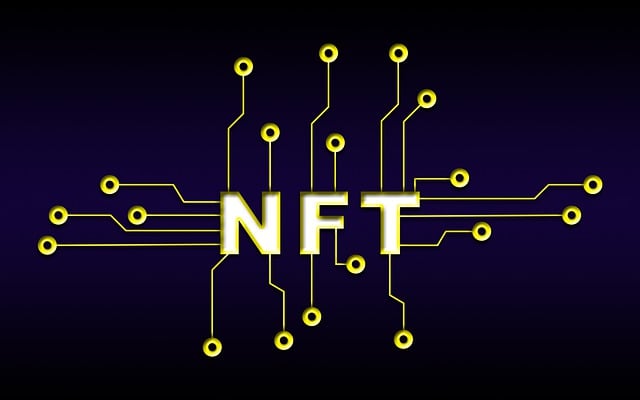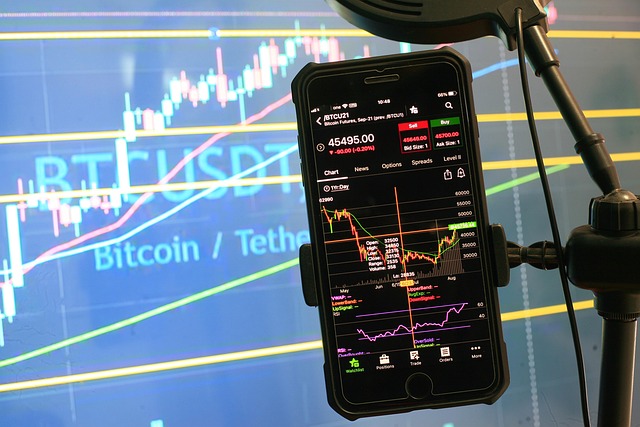Crypto Day Trading Tips
Author: Jameson Richman Expert
Published On: 2025-08-01
Prepared by Jameson Richman and our team of experts with over a decade of experience in cryptocurrency and digital asset analysis. Learn more about us.
Crypto day trading tips are essential for traders seeking to capitalize on short-term price movements within the highly volatile cryptocurrency markets. As digital assets continue to attract a diverse investor base—from retail traders to institutional giants—the importance of mastering sophisticated strategies, rigorous risk controls, and reliable platform selection becomes paramount. This comprehensive guide delves into the intricate dynamics of market volatility, advanced technical and fundamental analysis, detailed risk management techniques, and platform evaluations—equipping traders with in-depth tools to navigate crypto day trading with confidence and sustainability.

Understanding Crypto Market Volatility
At the core of crypto day trading lies the inherent and often extreme volatility of digital assets. Cryptocurrencies are notorious for their rapid and unpredictable price swings, which are frequently driven by macroeconomic developments, regulatory news, technological upgrades, and social media sentiment shifts. Unlike traditional markets, crypto operates 24/7, eliminating the typical closing hours that provide a temporary risk buffer but also demanding constant vigilance from traders.
Price swings of 10%, 20%, or even 50% within a single day are commonplace, making technical analysis and real-time data crucial tools for traders. Many seasoned traders leverage candlestick pattern recognition—such as doji, hammer, engulfing candles, and shooting stars—to identify potential reversals or continuation patterns. Fibonacci retracement levels are used to pinpoint potential reversal zones during corrections, while Bollinger Bands help gauge volatility and identify periods of market consolidation or breakout potential. Oscillators like RSI (Relative Strength Index) and MACD (Moving Average Convergence Divergence) are essential for assessing momentum, overbought/oversold conditions, and potential trend reversals.
Furthermore, high-frequency trading algorithms and automation bots employ machine learning models and real-time data feeds to execute rapid trades, exploiting small inefficiencies and discrepancies at scale. Staying informed through real-time news aggregators such as CoinDesk, CryptoSlate, and The Block is critical—especially for breaking news related to regulatory changes, security breaches, protocol upgrades (e.g., Ethereum 2.0), and macroeconomic shifts. Sentiment analysis tools that monitor social media platforms like Twitter, Reddit, and Telegram can also help traders anticipate short-term market movements by capturing collective mood and identifying catalysts for increased volatility.
A deep understanding of liquidity pools, order book dynamics, and slippage is also vital. During high-volatility periods, liquidity can evaporate quickly, leading to increased slippage and unfavorable fills. Advanced traders often analyze order book depth charts to anticipate potential support or resistance levels and to gauge market aggressiveness.
Developing a Solid Trading Strategy
A structured, adaptable trading plan forms the backbone of successful crypto day trading. This plan should clearly define entry and exit criteria, risk management protocols, and profit-taking strategies. Setting specific, measurable goals—such as daily profit targets and maximum allowable losses—ensures discipline and helps prevent emotional decision-making. Integrating multiple strategies can also enhance robustness; for example, combining scalping for quick profits with momentum trading during confirmed trends.
Many experienced traders adopt hybrid strategies that integrate technical and fundamental insights. Scalping involves executing dozens to hundreds of trades within a single day, targeting small profits from minor price fluctuations, and demands speed, precision, and cautious leverage use. Conversely, momentum trading focuses on entering positions when strong trends are confirmed via indicators like VWAP (Volume Weighted Average Price), trendlines, or volume surges. Combining these approaches can help adapt to different market conditions and optimize profit opportunities.
Key risk mitigation tools include strategically placed stop-loss orders just below recent support levels or technical signals, and take-profit orders to lock in gains at predefined targets. Backtesting strategies with historical data is essential for assessing their robustness, while paper trading allows traders to experiment without risking real capital. Maintaining a detailed trading journal—documenting trade rationale, emotional states, and outcomes—facilitates continuous learning and strategy refinement.
In addition, some traders utilize advanced order types such as fill-or-kill (FOK), immediate-or-cancel (IOC), and iceberg orders to optimize execution and minimize market impact. Developing a layered approach—combining technical signals with news-based triggers—can further enhance decision-making precision.
Risk Management Techniques
Effective risk management distinguishes sustainable traders from impulsive gamblers. Given the unpredictable and often violent price swings, rigorous risk controls are non-negotiable. A widely accepted rule is risking no more than 1-2% of your total trading capital per trade. This approach helps mitigate large drawdowns during adverse market conditions and ensures longevity in trading activity.
Diversification across multiple cryptocurrencies—such as Bitcoin (BTC), Ethereum (ETH), Cardano (ADA), and Binance Coin (BNB)—can reduce exposure to the high volatility of individual assets. For example, balancing a portfolio with both relatively stable assets and high-volatility altcoins can help smooth overall risk. Using leverage judiciously is critical; while leverage can amplify gains, it also magnifies losses. Understanding platform margin requirements, maintaining conservative leverage limits, and employing margin alerts prevent forced liquidations during sudden market downturns.
Implementing a comprehensive trading journal that logs entry and exit points, trade sizes, emotional states, and lessons learned is vital for self-assessment. Regular review of this journal reveals behavioral patterns, emotional triggers, and recurring mistakes. Daily loss limits, predefined stop-loss, and take-profit levels are essential tools for disciplined risk management—especially during periods of heightened volatility. Hedging strategies—such as options or inverse ETFs (where available)—can also serve as insurance against adverse moves.
Advanced traders often utilize portfolio rebalancing techniques, dynamic position sizing, and volatility-adjusted risk models to adapt to changing market conditions. Incorporating tools like the Average True Range (ATR) indicator helps set adaptive stop-loss levels based on recent volatility, enhancing risk control precision.

Choosing Reliable Trading Platforms
Selecting a secure, feature-rich trading platform is fundamental for effective day trading. The ideal exchange should offer high liquidity to facilitate quick order execution, low transaction fees, advanced charting and analytical tools, and fast order processing speeds. Security features such as two-factor authentication (2FA), cold storage options for funds, and regular security audits are non-negotiable for safeguarding assets.
Top exchanges favored by day traders include:
- Binance: Known for extensive trading pairs, futures and options markets, advanced charting tools, and comprehensive educational resources. Its high liquidity and low fees make it a preferred choice. [Register here](https://accounts.binance.info/en/register?ref=12093552)
- MEXC: Offers competitive trading fees, a user-friendly interface, and a broad array of derivatives including perpetual swaps and margin trading. [Join via this link](https://www.mexc.co/invite/customer-register?inviteCode=mexc-1bE4c)
- Bitget: Features social trading, copy trading, and a suite of derivatives, catering to traders who value community insights. Its API support allows for automation. [Register here](https://www.bitget.com/referral/register?clacCode=WSVEGD6H&from=%2Fevents%2Freferral-all-program&source=events&utmSource=PremierInviter)
- Bybit: Known for margin and derivatives trading with fast execution, high leverage options, and advanced order types like conditional and OCO (One Cancels Other). [Sign up here](https://www.bybit.com/invite?ref=Q8QKORN)
Always verify that your platform complies with regional regulations, employs robust security protocols, and offers sufficient liquidity. Conducting thorough user reviews, checking platform audits, and testing demo accounts are recommended steps to ensure your chosen platform aligns with your trading needs and risk appetite.
Staying Disciplined and Avoiding Emotional Trading
Maintaining emotional discipline is vital in the high-stakes world of crypto day trading. Fear, greed, impatience, and overconfidence can trigger impulsive actions—such as overtrading, revenge trading, or abandoning your predefined rules—that often lead to losses. Developing mental resilience involves strictly adhering to your trading plan, including stop-loss and profit targets, regardless of market noise or emotional impulses.
Practical techniques include practicing mindfulness, meditation, and scheduled breaks to sustain emotional clarity. Automated trading bots and alert systems can execute trades based on objective, pre-set criteria, reducing emotional biases. Avoid trading immediately after significant losses or during periods of high stress, as these states impair judgment. Building routines around disciplined trading schedules, setting daily or session-based trading limits, and maintaining a trading journal all contribute to emotional control and consistency.
Continuous Learning and Market Adaptation
The crypto environment is highly dynamic, with continual technological upgrades, regulatory shifts, and evolving market sentiments. Successful traders prioritize ongoing education—participating in webinars, online courses, and industry conferences—to stay ahead. Keeping informed about blockchain upgrades (e.g., Ethereum's transition to proof-of-stake), new trading tools, and macroeconomic policies is crucial for strategic agility.
Engaging with online communities like Reddit’s r/CryptoCurrency, Telegram groups, and Twitter influencers provides real-time insights and diverse perspectives. Maintaining a detailed trading journal for performance analysis helps identify behavioral patterns, emotional triggers, and areas for improvement. Experimenting with different trading styles—such as swing trading, arbitrage, or DeFi yield farming—and adjusting strategies to market cycles ensures adaptability and sustained profitability over time.
Additionally, incorporating quantitative analysis, machine learning models, and sentiment indicators can enhance decision-making. Regularly reviewing and updating your trading plan to reflect market conditions, technological advancements, and personal growth is essential for long-term success.

Conclusion
Crypto day trading demands a sophisticated blend of technical mastery, disciplined risk management, emotional resilience, and platform proficiency. Developing a deep understanding of market volatility, crafting flexible yet disciplined trading strategies, and committing to continuous learning are keys to consistent profitability. Choosing reputable exchanges like Binance, MEXC, Bitget, and Bybit provides access to liquidity, security, and advanced trading tools necessary for success. Remember, ongoing education, emotional discipline, and strategic flexibility are your best tools to thrive in this fast-paced, ever-evolving environment. Staying adaptable, disciplined, and informed will position you for sustainable growth in the dynamic world of crypto trading.